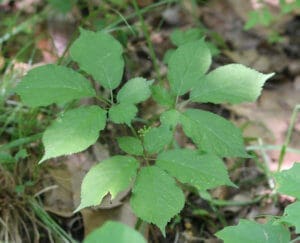Visitors of the Amazon rainforest may stumble across a climbing vine called Pfaffia panniculata, or as is more commonly known, Suma. This hardy vine grows at a fast clip reaching modest heights of only about one meter.1 However, what is seen above the ground is not nearly as important as what is hidden within the earth as it is the tuberous root that yields its important health properties.
The Botanical
 Suma belongs to the Amaranthaceae family of botanicals and is related to spinach, beets, and quinoa. The root itself resembles a cream-colored carrot. Some people use the root as a food source and remark that when cooked, Suma has a mild vanilla flavor. The root is commonly dried and shredded, and later combined with hot water to make a tea.
Suma belongs to the Amaranthaceae family of botanicals and is related to spinach, beets, and quinoa. The root itself resembles a cream-colored carrot. Some people use the root as a food source and remark that when cooked, Suma has a mild vanilla flavor. The root is commonly dried and shredded, and later combined with hot water to make a tea.
As a Restorative Supplement
Natives have used Suma as a system restorative supplement for over 300 years. In fact, they termed the plant “para todo” meaning “for all things” because of its apparent impact in helping to improve many health functions. Today, we find Suma to be an adaptogenvthat helps the body resist physical, chemical, and biological stressors.2
While few scientific studies have been conducted on the overall impact of Suma on the human body, consumers have reported many positive benefits* including improvements to a variety of wellness needs, fatigue, overall balance and muscle tone. Many people report feeling energized and rejuvenated. Because of this, it is sometimes called “Brazilian ginseng” although it is not related to Asian ginseng or American ginseng at all.
The Composition of Suma
The root is filled with key nutrients that make it an overall restorative plant including 19 amino acids, many electrolytes, trace minerals, iron, magnesium, zinc, vitamins A, B1, B2, E, K, and pantothenic acid. It has a high germanium content that may be responsible for its ability to act as an oxygenator. Its rich iron content may serve as an aid for those with anemia. The root also contains phytochemicals such as saponins, pfaffic acids, glycosides, and nortriterpenes.3
At Herbs-America, we source our Suma directly from the Amazonian Rainforest to make it easily accessible for you.
Liquid Extract
Our liquid extract is made of 35-40% organic grain alcohol, distilled water, and 100% Suma (Pfaffia paniculata) root. We only use dried root of the plant-sourced directly from Brazil for our extract. Click here to purchase Suma Liquid Extract.
Dried Root
Use it to make a wellness tea. Simply combine approximately 1 teaspoon of dried Suma root with a cup of boiling water for a relaxing tonic beverage. Click here to purchase.
Learn more and save more!
Stay up-to-date on the latest specials, news, and information from Herbs America. Sign up to receive our newsletter and receive 15% off your first order! CLICK HERE to get started.
“Pfaffia paniculata – (Mart.) Kuntze”, Plants For A Future”, published at: https://pfaf.org/user/Plant.aspx?LatinName=Pfaffia+paniculata. ↩
“Suma”, Encyclopedia.com, published at: https://www.encyclopedia.com/medicine/encyclopedias-almanacs-transcripts-and-maps/suma. ↩
Taylor, Leslie. The Healing Power of the Rainforest Herbs, 2005, Text reprinted at: https://rain-tree.com/suma.htm. ↩

Reader Interactions